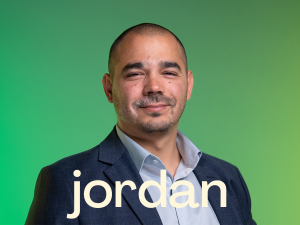‟ When you go to a conference, it’s like a small, closed ecosystem representing how the world should be. People from everywhere, different cultures, all dressed differently, and they all talk together, no problem. Then you take the plane home, and people from different countries fight again. ”
Meet Jordan Samhi: from taking apart electronics as a curious child in Metz to detecting malware on the Google Play Store, his journey into cybersecurity research has been driven by one principle: helping to make the world safer. Now a research scientist in Luxembourg, Jordan builds sophisticated tools to analyse software for vulnerabilities and malicious code, while exploring how AI can automatically check compliance with regulations like GDPR. Carrying the wisdom of Marcus Aurelius with him daily, Jordan brings discipline and rigour to the challenge of making the digital world safer for everyone.
Relive the conversation: transcript below!
What’s your background and how did you get into research?
I’m originally from Metz, France. I started my current job as a research scientist in Luxembourg in November 2024, but I’ve been in the region since 2019 when I began my Ph.D.. I studied computer science and security at the University of Lorraine in Metz. As a child, I loved taking things apart – unscrewing boxes and examining electronics. When I got my first computer as a teenager, I realised I could do the same in the digital world, but infinitely. That’s when I fell in love with the security side of computing.
What does your research focus on?
Simply put, I build software and techniques to analyse other software, looking for malicious code, vulnerabilities, and security issues to make the software ecosystem safer for end users. We’re also exploring AI capabilities – not just applying large language models (LLMs) to tasks, but trying to understand if they truly comprehend what they’re built for. For example, we’re testing whether they can hide or reveal code automatically. We’re also using AI to check software compliance with regulations like GDPR, which is a significant challenge.
If you had to explain your research to a five-year-old, what would you say?
I would simply say that I build techniques to fight against the bad guys in the digital world to make it a safer place for everybody.
Can you share an example of real-world impact from your research?
During my PhD, I built a logic bomb detector that led to discovering eight malware applications in the Google Play Store. We contacted Google and they confirmed the applications were malicious and removed them. This is what I call having an impact in the real world. As a researcher, we could just write papers and go to conferences, but I want more.
‟ I really want my research to have impact in the real world – building prototypes that companies can reuse, for instance.”
What’s been your biggest challenge in research?
When I entered the research world, the biggest challenge was learning how to write text that is research oriented. That was very difficult at first. I’d say the most underrated skill in tech research is soft skills, particularly writing papers and communicating science.
‟ Tech research involves a lot of technical work. We write programmes, use the terminal – we look like hackers. But the most important thing is writing papers to get your research out there, and make the world understand it. That’s very challenging.”
Do you have any role models?
I didn’t have a role model growing up, but I have one now thanks to the books I read: Marcus Aurelius, who died almost 2000 years ago. It has nothing to do with computer science, but this man had discipline and self-control. He had a lot of power but restricted himself from overusing or abusing it. I carry Marcus Aurelius with me in my thoughts every day just to remind me of some principles of life. Also, my rigorous and disciplined approach, shaped by how my parents raised me, helps me a lot in research – to not give up when things get too hard.
What made you feel welcome at your research institution?
The environment as a whole made me feel welcome when I first joined SnT. I started in a lab in a research group and was really surprised by how people behaved there. My supervisors were welcoming, informal, and very supportive. Same with colleagues – we went out for beers, which was great. We also worked with the different parts of the organisation, like the Technical Transfer Office –there was a strong collaborate spirit . I felt welcome then, and I still feel welcome. That’s why I came back to Luxembourg.
What’s your experience with diversity in research?
When you enter a lab in Luxembourg, you have so many different cultures and diversity. People come from everywhere. In our lab, we have people from Africa, America, China, Europe – almost 20 different countries. That’s great. I had a conversation with a friend recently where I said when you go to a conference, it’s like a small, closed ecosystem representing how the world should be. People from everywhere, different cultures, all dressed differently, and they all talk together, no problem. Then you take the plane home, and people from different countries fight again.
What does tech research need more of?
I would say tech research needs more women. I’m not a politician, but I heard recently that in France, Élisabeth Borne (now the Minister of National Education) is trying to foster this. To encourage girls in high school to start mathematical, physics, or computer science careers early because there’s an imbalance. I don’t have a specific recipe, but people and politicians are pushing forward. I’m pretty sure that in 20 years, the gender balance in tech research will be better.
